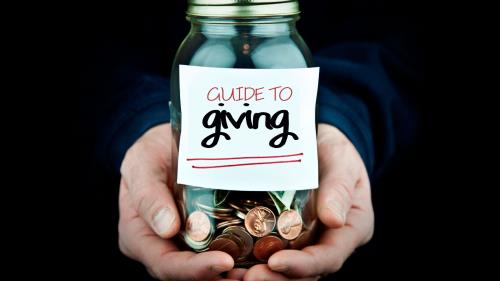-
Seeds
Contributed by Rodney V Johnson on Nov 28, 2017 (message contributor)
Summary: The facts about the seeds we sow
The Seeds
Introduction
Last week we talked about sowing – how we are sowing seeds every day. Whether we want to or not, those seeds are going out. We looked at the Scripture in Galatians and Matthew – remember Galatians said, “Do not be deceived, God is not mocked, whatever a man sows, this he will also reap.” So from last week’s message we learned that sowing is something that all of us do – and we learned that we will reap from what we have sown. One of the key principles that we talked about last week was that we couldn’t control what happens to the seeds that we sow, but that it our responsibility to sow the seeds. I also mentioned that it is our responsibility to do something with the seeds that others sow within us. This is where our responsibility comes in. While you are sowing your seeds, others are sowing their seeds, some falling within your grasp, on your soil. So, how do we recognize a seed? What are the different types of seeds? This is what I want to talk about this morning, and next week I will end with the reaping. Last week after service I had a chance to talk with Nikki and Aunt Mae and learned some things about seeds. I did not know that they had to go in the ground a certain way and that if they started growing downward, they will turn around so that their growth will grow upward. They also told me that every now and then they would uncover their seeds to make sure they were growing in the right direction. This can also apply to us as to the seeds that are planted with us. So I want you to hold that thought until later and we will come back to that in a minute.
I. Understanding Seeds
I want to tell you a few things about seeds that I did not understand or know and then use that to show you how that applies to us. Although there are different types of seeds, they have several things in common. For example, all seeds must leave their parents before they can produce something. The seeds falls to the ground where they are picked up or transported to a place where they can be fertilized and grow.
• Seeds are fertilized during the process of fertilization. This process starts the seed’s growth into what it is to become.
• The next thing that all seeds share is their viability. Some seeds are viable (able to remain alive and grow into something after separating from the parent) for only a few days like those of a willow tree, while other seeds are able to remain viable for thousands of years like the Oriental lotus. Seeds that are sown after their best time can produce weak plants or not grow at all.
• Another trait that seeds share is their ability to go dormant (so-called resting periods – time of sleeping). Some seeds continue to mature during these resting periods while other seeds get ready for what is called the germination phase. So there are times when the seeds must rest before they are ready to start producing.
• The next phase is the fertilization phase. This is very similar to the human body fertilization. The seeds cannot produce anything until they are fertilized.
• The last phase is the germination phase. During this phase the seed come out of its dormant phase and begins to start growing. This does not take place until the seed is transported to a favorable environment, which contains adequate water, oxygen and a suitable temperature. During germination, the seed begins to grow into what it was ordained to be.
• The next thing I want to stress here is that sometimes seeds get mixed up in the same bag – you may purchase one thing and when it starts growing you find out that it is something else.
• Finally, there are both good seeds and bad seeds. When you are receiving seeds that are being sown in your life, you must be able to tell the difference.
Now that you have all of these seed facts, how do these facts apply to your life and the seeds that are being sown within you?
II. Spiritual Seeds
Spiritual seeds go through the same process as natural seeds – they separate from their parent (person sowing the seeds), lie dormant, sometimes for years, go through a phase of waking, getting fertilize and start producing fruit. They can also get mixed up – sometimes you receive seeds that were not meant for you and there are both good and bad seeds. With this understanding, I want to walk you through how we receive seeds and what happens to them after we receive them.

 Sermon Central
Sermon Central



